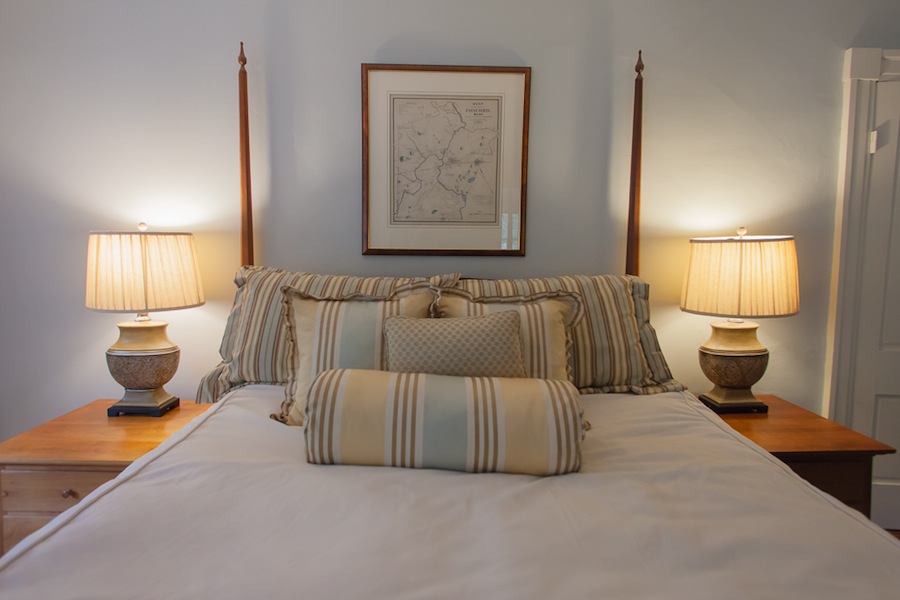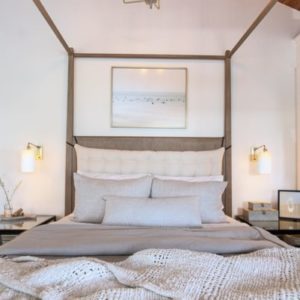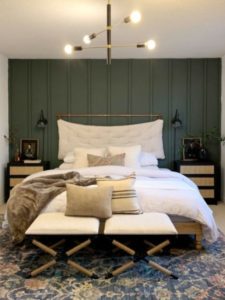A bedroom should be a cozy, calm place and lighting should be designed to fall around the bed, not directly onto the bed. There are few lighting types to keep in mind for the bedroom:
– Wall Swing Arm Lamps are not only a wonderful source of both ambient and task lighting, but they are a great way to frame a bed. Using wall swing arm lamps will also free up space on the nightstand for other decorative and or functional items such as your phone or your latest “can’t put down” book. While some may recommend a wall sconce to place over a nightstand, this is actually not a good idea because a wall sconce has a relatively small extension from the wall which means that your head will form a shadow on whatever you are reading. A wall swing arm lamp has a much longer extension and can be placed beyond your head so as not to shadow. At the same time, the wall swing arm lamps typically have at least one “joint” which allows them to be pulled farther out, or pushed closer to the wall If you want to keep the nightstands clear.
– If you love the traditional symmetry and functionality of table lamps, opt for bedside lamps that coordinate with the style of the bedroom. One of the most common mistakes we see people making with bedside table lamps starts with the thought that “small table means small lamp”. But what we are really wanting is a lamp with a small profile – not necessarily a small lamp; we want a lamp that doesn’t take over the entire table. A candlestick style lamp often makes a great bedside table lamp because it offers a small profile on the table, yet enough height to provide good reading or task light. Remember, your useful task light comes from BELOW the lampshade – not through the lampshade. Ideally, when in your comfortable reclining position in bed, the bottom of the shade should hit you somewhere between your chest and your nose; in that case, you are getting the benefit of the full illumination from the lamp, but when you turn to switch the lamp off, you are not staring at the light bulb!
– To supplement existing natural lighting and ensure enough ambient lighting when night falls, we suggest a ceiling light or lights, depending upon the size of the room. If the ceiling height is 8′ or less, use of a semi-flush or flush mount fixture would serve the space well. For higher ceilings, a pendant or small chandelier might be the right solution.
If you’re looking to redo your bedroom lighting, perhaps the most important thing to consider is what / how YOU will be using the space. The American Lighting Association suggests asking the following questions when you’re evaluating your current bedroom lighting:
1. Can I see well enough to get dressed?
2. Is there a light in the closet?
3. Are there individual reading lights on each side of the bed?
4. Is there an overhead light source?
5. Do I have enough light to determine the colors of clothing in my drawers?
6. Do I have a light source near the door?
7. Have I installed outlets in convenient locations while building/renovating my bedroom?
8. Can I fill dark corners with portable lighting sources?
9. Do I have a dimmer installed on the overhead light source?
10. Are there lights at the dressing table to help with makeup?



